Electromagnetism Resource
4. Electromagnetic Effects
4.2. Force Between a Current-Carrying Wire and a Magnet
Any current-carrying conductor that is in a magnetic field will experience a physical force.
The force will be at right angles to both the current, and the magnetic field.
The force on a current-carrying conductor in a magnetic field is given by:
\( F = B i L \sin \theta \)
where \( F \) is the magnitude of the physical force on the wire (N), B is the magnetic field (T), i is the current, L is the length of the conductor in the magnetic field (m), and \( \theta \) is the angle between the length and magnetic field vectors.
If the current and magnetic field are parallel (going in the exact same direction) or anti-parallel (going in exact opposite directions), the force is zero. This is because \( \theta = \) 0° (parallel) or \( \theta = \) 180° (anti-parallel).
The force magnitude is a maximum when the current and magnetic field are at right angles to each other.
The force is always perpendicular (at right angles) to both the magnetic field and direction of current flow.
The rules below explain how the force direction is determined.
Determining the Direction of the Magnetic Force
There are many ways of determining the direction of the magnetic force.
Four common ways are presented below.
The right-hand rule, left-hand rule, and right-hand slap rule work by examining the effect of the magnetic field directly on the current-carrying conductor.
The hands-free method works by noting that while for force is always directly on the current-carrying conductor itself, the direction of the force can also be determined by seeing the effect a current has on the local magnetic field.
Right-Hand Rule
The direction of the force is given using the right-hand rule, as shown below.
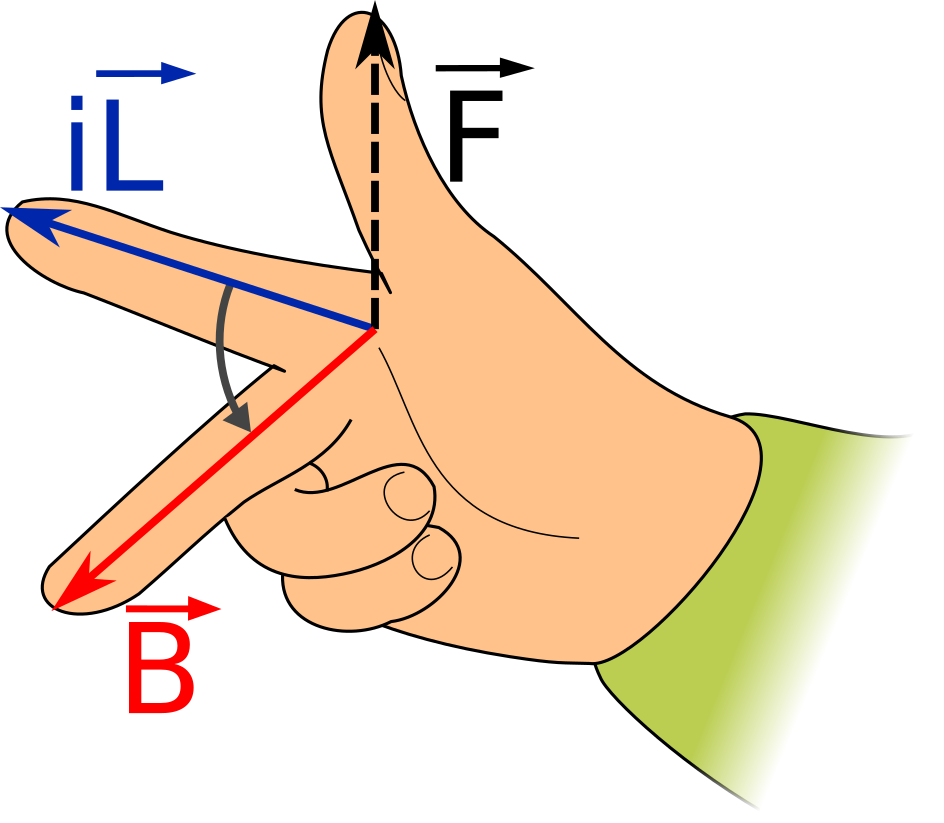
Left-Hand Rule
Some sources may describe the direction of the force using the left-hand rule, as shown below. The left-hand rule is similar to the right hand rule, except that it uses the left hand, and the current and field are swapped between the index
and middle fingers.
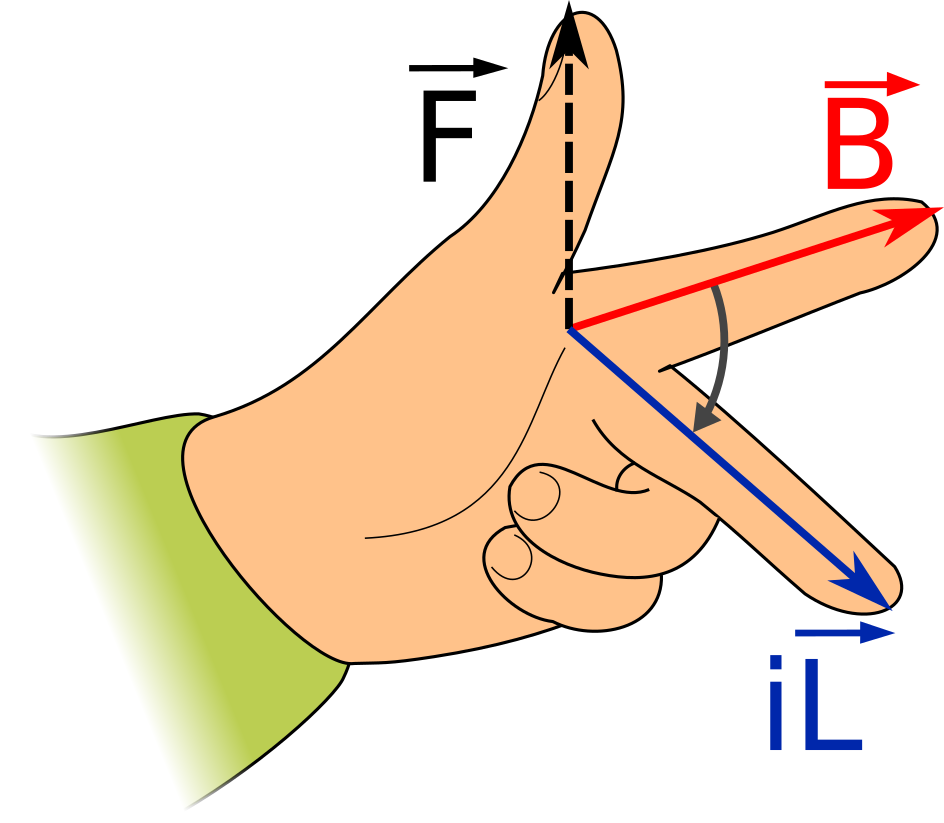
Right Hand Slap Rule
The right-hand slap rule or right-hand palm rule is shown below.
The thumb represents the direction of the current. The fingers represent the magnetic field.
The direction of the force is the direction you would move your right hand as if you were trying to slap an object.
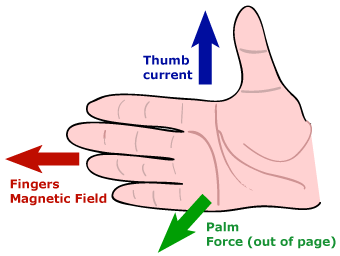
Analysing the Magnetic Field ("Hands-Free Method")
A wire in a magnetic field will always be pushed from the stronger magnetic field to the weaker magnetic field.
This means the direction of force can be determined without using any hand rules.
Consider a current carrying wire in a magnetic field, as shown below. The force on the wire is shown pointing to the right. The reason for this is explained below.
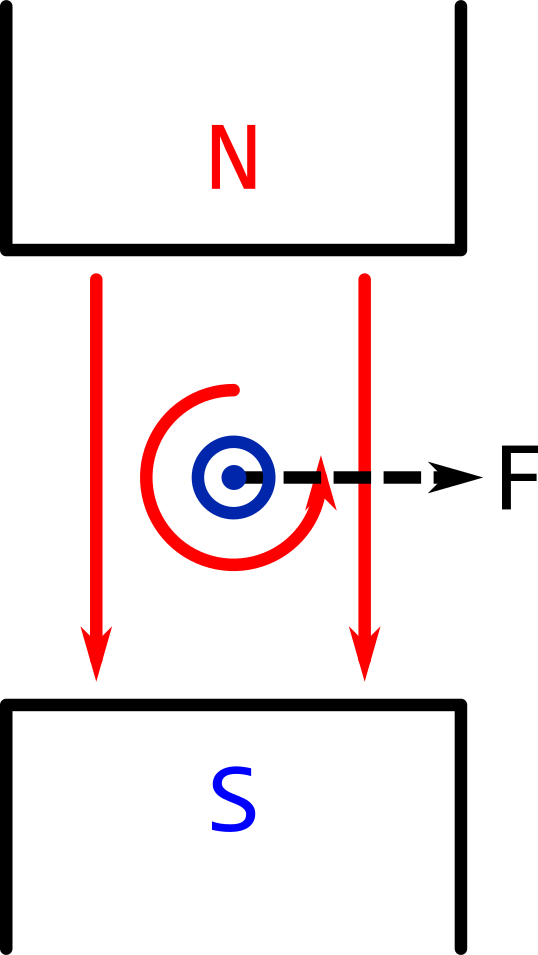
The drawing shows parts of two magnetic fields: one from the permanent magnet, and the other from the current-carrying wire.
The magnetic field from the wire is circular and anti-clockwise.
The magnetic field from the permanent magnet is straight down.
On the left, the magnetic field from the wire strengthens the total magnetic field, because both magnetic fields are pointing in the same direction.
On the right, the magnetic field from the wire weakens the total magnetic field, because the magnetic fields are pointing in opposite directions.
The force is along the line that weakens the total magnetic field the most quickly.
In the case of the picture above, the force is to the right.
Swapping the direction of the current and the direction of the magnetic field at the same time will not affect the direction of the force.
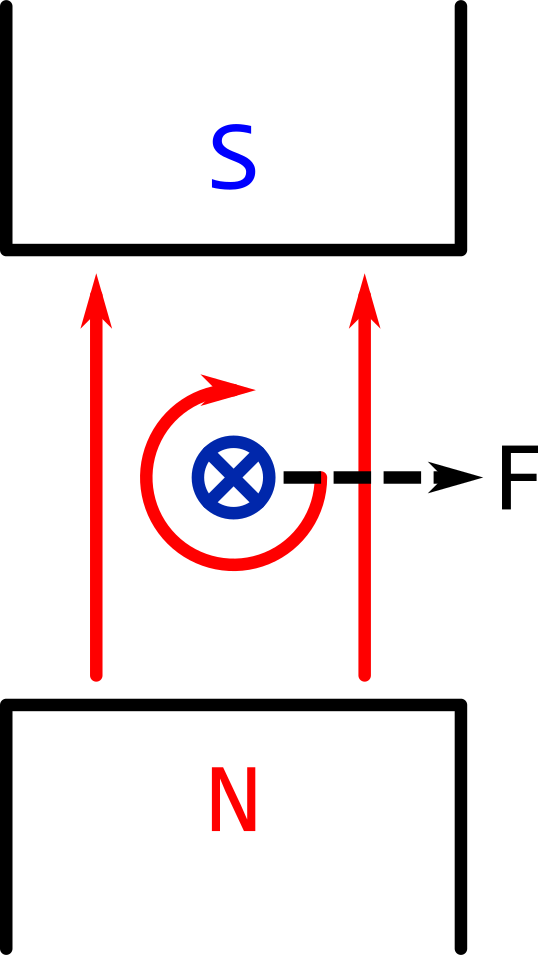
Swapping one of the current direction or the magnetic field direction will reverse the direction of the force.
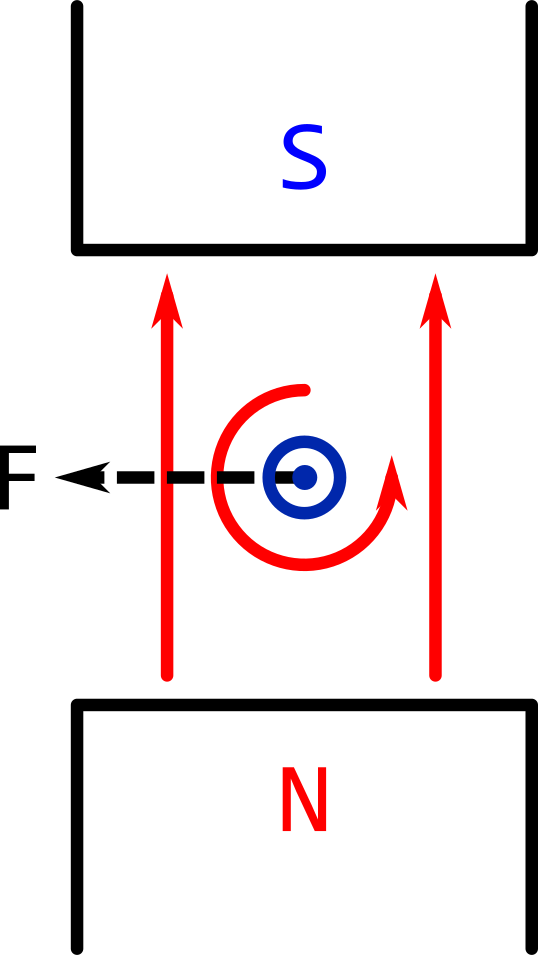
Another "swapped" scenario is shown below.
